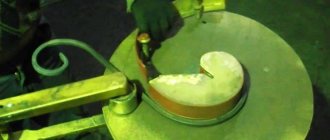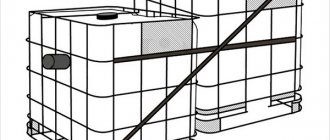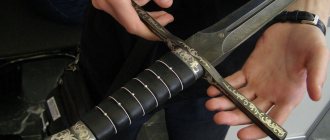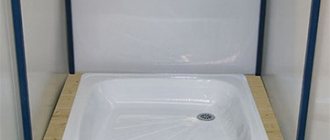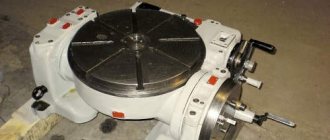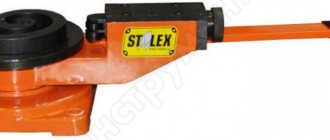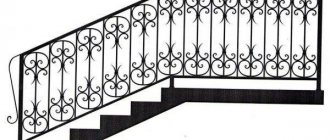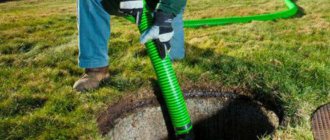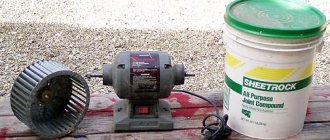Selection criteria, what you need to know when purchasing.
When choosing damask steel, it is important to pay attention to its characteristics, cost, and type. A quality instrument can be identified by the following criteria:
- The blade has a contrasting, clear pattern across its entire surface. This pattern indicates the correct hardening of the material, as well as the approximate composition of the steel. A pattern with a high degree of contrast can only be obtained when the carbon content in different types of steel differs by more than 0.4%.
- Absence and presence of lack of penetration. This is the name given to the areas between the layers where no welding has occurred. Lack of penetration significantly spoils the appearance of damask steel, and sometimes affects its operation.
- Sharpening quality. The cutting edge must be sharpened at a certain angle, evenly throughout its entire length.
The cutting edge must be sharpened at a certain angle, evenly throughout its entire length.
Bulat and Damascus
Drawing of Damascus steel on a metal cut:
The term Damascus steel appeared relatively recently. A similar name for forged products began to appear in various sources in the middle of the 19th century. Before this, the name “Gurda” was more often used, as the creations of blacksmiths from the Caucasus and Mesopotamia were called. There they began to forge products from a mixture of alloys, achieving an unusual pattern on the surface of the blades.
Damask steel, as historical research shows, came from India. History museums have preserved samples of weapons that used alloy steel castings. Most often they contain chromium, the concentration of which can reach up to 14%.
However, damask steel production is designed only for individual production. Therefore, the technology is quite expensive. The master spends a lot of time to make a specific sample. If there is a conversation about mass production, then do not count on complex technology.
Only the Zlatoust Arms Factory (the only large enterprise) produces damask blades. Damascus steel products are produced upon special order. Prices for goods are high, but there is a stable demand for products not only within Russia, but also abroad.
Metallurgist Pavel Petrovich Anosov studied production technology and created industrial technologies. The results of his work are present in all textbooks on metal science and blacksmithing.
Modern damask steel in products - a replica of the HP-40 knife in a modern design, made to order:
During the Great Patriotic War, the plant produced army knives and sabers for cavalry. Quite a lot of weapons have since been sold on various Internet resources. Modern blacksmiths produce remakes (this is the name for products that are made in the image and likeness of ancient samples). Several hundred workshops offer copies that are difficult to distinguish from the original.
Scout knife NR-40, made in 1942 - more than 7 million copies were produced:
Judging by the number of offers and prices, we can conclude that individual goods are in stable demand. The production of products from damask steel and Damascus steel can be quite an interesting and profitable business.
Modern knife HP-40, made according to samples from the period of the Great Patriotic War:
Experts see the difference between damask steel and Damascus steel in the raw materials:
- Damask steel is an alloy that contains a significant amount of alloying elements; during subsequent forging processing, platinum is connected using the forge welding method, which gives the product a complex of new properties.
- Damascus is a mechanical connection of metal blanks that differ in their properties. Forging up to several dozen layers is performed.
Equipping a workshop for the production of products
In the workshop of a home craftsman who wants to start making products from Damascus steel, you need to have:
- Welding machine - with its help, plates of materials of different strengths are welded into a single block, which can be processed together.
- Forge - it heats blanks from finished items to high temperatures (more than 800 ⁰C).
- An anvil is needed for forging. Forge welding is performed using the deformation method; the shape of the part changes at different stages of processing.
- A set of hammers and mallets helps you strike with different strengths. When working together, the leading blacksmith uses a light hammer to show the assistant where to strike with a heavy hammer.
- A vice is used to hold workpieces at different stages of work.
- A drill press is needed to drill holes.
- The sharpening machine is used more often than others; it gives shape and sharpness to products.
- A grinder is a variant of a sharpening machine; its distinctive feature is the use of an abrasive-coated tape glued into a ring. Using a grinder, smooth slopes are formed at a given angle.
- Machine for making slopes. High-quality sharpening to razor sharpness is possible only with a special device that allows you to move along a strictly defined trajectory.
- Grinder with a set of cutting and cleaning discs. A simple tool provides assistance in performing a variety of types of actions.
Sharpening a blade on a grinder:
In addition to the basic set of machines and devices, many craftsmen additionally use woodworking equipment. It helps to make handles from durable wood. Small lathes help create complex fittings that decorate finished items.
Homemade miniature grinder, grinding slopes:
Workshops that produce high-quality knives have rollers. Heated workpieces are rolled onto them to obtain a plate of a certain thickness. Do-it-yourself Damascus steel is obtained after repeated forging and rolling through rollers.
Rolling rollers:
The presence of a crank hammer helps to forge the workpiece with a series of numerous blows. A pneumatic or hydraulic press is used for volumetric compression of metal. One movement gives the desired geometry.
Some craftsmen have dies and punches that allow plastic deformation to give a standard shape, for example, pressing a fuller on a blade (used to add rigidity while simultaneously reducing weight).
Materials for making knives. Damascus steel.
Damascus steel
Damascus steel - a perspective on history.
Long blacksmith activity
reputedly significant, a blacksmith could produce steel and cast iron from an alloy that was produced by mixing ore and coal in a furnace.
The upper layer of the alloy was relatively soft; inside, due to the greater concentration of carbon, the alloy was distinguished by its high strength.
Craftsmen knew how to make Damascus steel
and appreciate its unusual qualities, production technology was constantly improved.
In modern times, they continue the customs of ancient craftsmen and are constantly trying to improve the properties of the alloy so that it retains its cutting properties, is stronger and more resistant to corrosion, elegant and practical.
It was much more difficult for specialists of past centuries to achieve this, in our time, when metallurgy gives us a considerable number of different alloys.
To obtain high quality alloy (Damascus steel)
you need the correct choice of steels to be welded, knowledge of their physical and chemical composition, and the ability to skillfully process the material.
Based on these factors, it is necessary to develop steel that can be used to make knives and blades. Damascus blades are made in small quantities, with a unique structure that can only be correlated with the DNA formula.
Based on the product, you can also identify the blacksmith who made it, since every craftsman has his own style and has his own secrets of heat treatment. Durability, practical value and grace distinguish Damascus steel.
Types of Damascus steel and manufacturing methods
Alloy (Damascus steel)
- this is a sublime material that personifies the customs and art of ancient artisans.
In ancient times, there were two varieties: malleable iron and cast iron containing over 1.5% carbon, which cannot be forged.
Neither one nor the other fully met the requirements for the manufacture of weapons (swords, knives): cast iron soon broke, and wrought iron bent. Hardness and elasticity are what Damascus steel combines flawlessly.
Whoever possessed a weapon made of Damascus steel had an undeniable advantage over the enemy.
How is this alloy (Damascus steel) obtained?
The necessary steel can be purchased or found at scrap metal dumps.
Several steel plates of different grades are placed alternately in a layered package.
The size of the steel plates should usually be (but you can determine it yourself) 25-35 mm wide, 85-125 mm long, take an odd number of 5,7,9. The overall thickness will be from 30 to 50 mm. The plates must be smooth; otherwise it will be impossible to weld them together. To prevent the plates from falling apart at the ends, they are welded or wrapped with heat-resistant wire.
Sometimes a specialist keeps one plate longer than the others in order to use it as a long handle.
The plates are heated to a temperature slightly below the melting point of the metal. Not all experienced masters can do this.
If the temperature is too high, the carbon burns and the steel can be thrown away; it cannot be forged. If the temperature is low, the steel will not be welded.
You also need to ensure that the plates are heated evenly along the entire length of the product.
The required temperature can be seen by the color of the steel.
After the steel has acquired a pale yellow color, you can begin forge welding.
The work is quite fast; welding of steel occurs in a very limited time and temperature period.
Steel should not be left in the open air for a long period of time due to the appearance of an oxide film on its surface.
Many specialists use fluxes. The flux begins to melt and falls on the workpiece, thereby preventing the creation of scale.
The steel package is immediately placed on the anvil and by striking the workpiece from one edge, fluxes and impurities are “displaced” to the other edge, while
plates are welded. All this is accompanied by abundant sparking. If everything went well, then you get a package of alloy (laminated Damascus steel). If you need a larger number of layers, you need to forge the product, fold it in half and weld it again.
Once the required number of layers has been obtained, you can begin to create a drawing, which can be applied in different ways, as indicated below.
The patterns appear later, after the steel is forged and the lower layers of metal protrude.
Cutting ability, resistance to rust, color tone, change in metal during etching depend on the initial grades of steel used in Damascus steel.
The alloy (Damascus steel) is not stainless, due to the lack of chromium in it, it contains at least 13%.
Damascus steel is patterned by etching with sulfuric acid or ferric chloride.
An aggressive environment affects different steels differently; as a result, after etching, the layering of the steel becomes clear, which is perceived as if it were a pattern.
The number of patterns and their combinations in Damascus steel is unlimited.
There are three types of Damascus steel: layered, torsion and mosaic.
Layered Damascus steel.
This includes whole varieties of Damascus steel, where the layers are located parallel to the blade. Simple knives have from 40 to 120 layers. Once upon a time they tried to forge steel more gracefully and thinner, thereby trying to improve its cutting properties. However, since extremely thin Damascus steel is difficult to distinguish with the naked eye, and by looking at the product, not everyone will be able to determine that it is Damascus steel. Nowadays, they are trying to limit the number of layers.
"Wild" Damascus steel.
Judging by the name, the pattern on this steel has a chaotic, one might say, “wild” configuration. Unlike most other varieties, when making, they do not purposefully try to obtain some kind of conditioned pattern - all patterns are organized spontaneously. In America, a similar species is called Random Damascus. After this finishing, one of the steels included in the composition remains light, which is explained by the higher nickel content, the other darkens. By keeping steel in acid for a long time, something like a relief appears, since the “weaker” layer is removed under the influence of acid. Big and Small rose. This grade of Damascus steel is produced by stamping layered steel. The blacksmith presses a template into the heated metal, as a result of which some layers partially merge and, after grinding, the template pattern appears on the surface of the part. It is important that the stamped pattern is quite deep because it may disappear during subsequent sanding.
Japanese Damascus steel.
This type of layered steel is distinguished by its extremely thin structure, so some layers cannot be seen with the naked eye. In some cases, the number of layers reaches up to 2 million. If you take a steel package with 8 layers, then when laid eight times you can get 2048 layers. Japanese Damascus steel is pickled and its structure is revealed through special polishing. This steel stands out from other types not only by its structure. Its characteristic feature is the hardening line on the blade called Hamon. In order to carry out a real hardening line, the blade is covered with a special clay mixture, except for the blade, so only the clay-free area is subjected to hardening. This type of hardening affects the properties of the sword: the sword remains elastic, only the blade becomes hard, even brittle. Tape Damascus steel. For the manufacture of this type, layered Damascus steel is used, which is stamped measuredly perpendicular to the center line of the blade. The ribbon pattern appears during subsequent finishing. And here the depth of the stamp must be deep so that the design does not disappear after processing.
Nickel Damascus steel.
Nickel plates are added. Nickel cannot be hardened and this negatively affects the cutting properties of the blade; one advantage of nickel, an alloying element, gives the steel resistance to etching, and makes polished steel lighter. However, if any thin layer of nickel gets into the blade area, it will wear unevenly.
Torsion Damascus steel.
Torsion Damascus steel is made from layered steel, having from 8 to 33 layers, is produced in the form of rods and, when hot, is spun into a rope. Rods twisted clockwise and counterclockwise are welded. The production of this type is labor-intensive; the blacksmith must first produce selected layered steel. When twisting, he must ensure that the rods do not break as he tries to make as many turns as possible.
.
Turkish Damascus steel
Turkish Damascus steel has six or more strands available in the alloy. This type of steel is very expensive to manufacture and is therefore considered one of the highest quality and most expensive types of Damascus steel.
Torsion steel with cutting bar.
To improve the sharpness of a knife or blade made of torsion steel, a cutting bar made of fine-grained Damascus steel or monosteel is forged onto the blade. The knife will have a beautiful appearance and be practical. A cutting bar made of finely formed Damascus steel sheets makes the structure more uniform; such a bar requires high-quality steels, but twisting them may cause problems. It is necessary to ensure that the line between the cutting bar and the first twisted strip is smooth.
Damascus steel from chainsaws or wire.
The real appearance of Damascus steel causes numerous controversies among many amateurs - adherents of the purity of Damascus steel. For manufacturing, they use saw chains, steel wire harnesses that can be hardened, and weld them into blanks. They use chains from motorcycles, which does not leave bikers indifferent. The appearance of the finished products is quite tempting, but the cutting properties of the blades cannot be called excellent, since these materials are not intended for the manufacture of blades.
.
Mosaic Damascus steel.
The patterns here are collected based on various types of steel. The production of this type of Damascus steel is carried out using presses that ensure uniform processing. The patterns consist of profiles (quadrangular) that are adjusted to each other, which allows them to achieve the best welding. After the steel package is welded, 25-30 mm plates with a mosaic pattern are cut from it. The plates are entirely suitable for making cheeks or handle poms. If they want to make a blade from these plates, they are combined together and welded.
Damascus steel from meteorite iron.
The components of this exotic species are hardened carbon steel and pieces of meteoric iron. The layers released on the surface after etching are nothing more than spacers made of meteoric iron - due to the higher nickel content, they are not affected by acid and preserve light coloring
STAINLESS DAMASUS STEEL
Forged Damascus steel.
Steels with a high chromium content are not so easy to weld; despite this, specialists still have separate techniques. Chromium, coming into contact with oxygen in a heated state, immediately forms an oxide film that interferes with the welding of steel layers. Specialists who have studied the manufacturing process manage to minimize the flow of oxygen during welding. The alloy obtained using a method that is expensive in its technology is becoming more and more famous. Powder metallurgy makes it possible to combine alloying elements in an alloy in concentrations that are inaccessible to simple casting techniques. In the aviation industry, using this method, so-called superalloys are formed that can withstand significant loads. The starting material is fine metal powder, sprayed through special liquid metal nozzles in a vacuum or passive gas. Individual layers are formed by backfilling, during which a variety of metal powders are used. Powder layers in a dough-like state are sintered together at high pressure and high temperature, then the workpiece is shaped as for “ordinary” Damascus steel. The patterns are stamped, and the rods are rolled up, the subsequent finishing of the blade is carried out without any questions.
Thanks to high-quality “impurities,” the sharpness of knives and blades and corrosion resistance are very high. Damascus steel, made by powder metallurgy, has a special property: when tempered at a temperature of 500°C, its hardness increases again. This property of steel is used to give the steel a certain color by heating it. The master heats the blade after hardening to a temperature of 500°C, as a result of which its surface acquires a rather special blue-red hue. The hardness of an ordinary steel blade at a temperature of 500°C would decrease significantly. Unfortunately, such tarnish colors generally do not last very long, and secondary heat treatment of most finished knives is no longer possible. So the coloring of metal obtained by tempering is only suitable for knives displayed in a display case.
Fused Damascus steel.
This variety, familiar under the name wootz, is an alloyed steel. Various steels are united not by forging, but by melting. When heated to the melting point, all kinds of ores and charcoal are added to the steel in the form of impurities. The dagger shown in the picture is called Djambija, it is approximately 200 years old, and its homeland is the Indo-Persian region. CAST INGOT - was used as the starting material
, taken straight from the crucible from which the blade was formed. With the help of rubies fixed in special clamps, the blade was sanded, then polished to shine with a polish made of resistant Wootz steel and finally treated with plant juices so that the Jauhar - a pattern characteristic of Wootz steel - was clearly visible.
What to prefer?
The preference for one or another type of Damascus steel depends on many factors, but the final result is still a matter of taste. Damascus steel, made by powder metallurgy, impresses with its beautiful sharp blades and great corrosion resistance. Traditional Damascus steel attracts with its sincere beauty, it is easily sharpened, but at the same time it becomes tarnished and susceptible to corrosion.
Some video:
Stamp Damascus Part 1
Stamp Damascus Part 2 Patterning
This post may contain affiliate links. This means I earn a small commission from links used at no additional cost to you. See my privacy policy for more information.
unique, article, content
Refining methods
Refining of crude metal: crude metal contaminated with impurities is refined using various methods (with relatively narrow limits of applicability) [2].
- Physical methods for refining metals
: segregation (zeigeration), precipitation of intermetallic compounds, distillation or distillation refining (teasing). - Chemical methods for refining metals
: selective oxidation and sulfidization, chlorination. - Electrochemical methods for refining metals
(electrolytic refining - electrolysis of aqueous solutions or melts).
Physical refining methods are based on differences in the physical properties of the separated components. For example, a method of refining metals, such as segregation, is based on creating homogeneity of the melt by reducing the solubility of impurities when the melt is slowly cooled or on the decomposition of the alloy when it is slowly heated.
Chemical refining methods are selective oxidation and are based on differences in chemical affinity for oxygen (O), sulfur (S), chlorine (Cl).
Electrolytic refining of crude metal
is the refining of metals by electrolysis with a dissolving anode.

